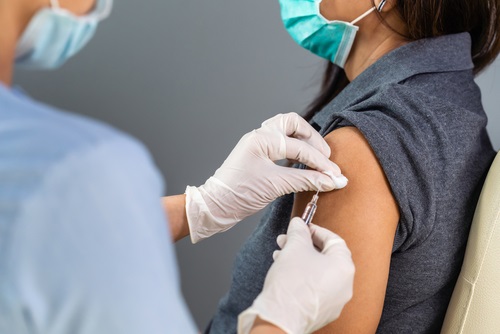
July 26, 2021 – The Delta variant continues to flex its muscle in the United States, proving far more contagious than earlier strains. It also shows the ability to break through our protective wall, infecting fully vaccinated persons in small but increasing numbers.
Yet, while we should expect new infections to rise further for another few weeks, vaccines remain a powerful weapon in the fight against severe disease. Additionally, there are indications of the Delta virus running its course in the United States by Labor Day.
Just how fast has the Delta variant spread in the United States?
Four times as many Americans reported a new infection last week than had in mid-June. Indeed, the Covid-19 infection rate grew faster in mid-July than at any other time during the pandemic.
Fortunately, we were starting from a relatively low rate, and the available vaccines are limiting the severity of these infections among vaccinated individuals.
Despite the growing numbers of breakthrough cases, unvaccinated persons account for most hospitalizations and substantially all deaths. Centers for Disease Control and Prevention (CDC) Director Dr. Rochelle Walensky called this a “pandemic of the unvaccinated.”
Tennessee Health Commissioner Lisa Piercy reported that 97% of hospitalizations and 98+% of deaths with Covid were among the unvaccinated.
In Los Angeles County, unvaccinated persons were four-and-one-half times more likely to be infected in June than vaccinated persons and five-and-one-half times more likely to be hospitalized. Similar reports have come from health leaders across the country.
The current surge is now entering its second month in the United States. In that time, the infection rate jumped more than 400%, from 3.6 daily infections per 100,000 to 15.1, and is still climbing. Hospitalizations have increased too, but only half as much as infections. COVID deaths fell during this time, although these rose 15% in the past two weeks.
How long can we expect this current surge to last?
Let’s explore this first by considering the experiences of India and the United Kingdom. Then, we will examine the current pattern in the United States for clues of the surge’s eventual demise.
The Delta variant was first discovered in India. In April and early May, the virus devasted this country. Without the benefit of widespread vaccinations, India’s infection rate skyrocketed by 1800% in eight weeks. But the rate fell just as quickly as it rose. Today, India’s infection rate is as low as it has been in four months.
In many respects, the United Kingdom provides a better comp for what we might anticipate in the United States. Like the U.S., the U.K. has implemented one of the more robust vaccination programs in the world. The U.K. outpaced the U.S. in first doses, but the U.S. led the U.K. in getting people fully vaccinated for a long time.
Despite its strong vaccination effort, the United Kingdom could not avoid Delta’s impact. In two months, from mid-May to mid-July, infections in the U.K. swelled from 2-per-day per-100,000 to 69. One month into this surge, infections ran at the same rate (15 per day per 100,000) in the U.K. as in the U.S. today.
However, infections started falling in the U.K. last week. Like India, they seem to be dropping as quickly as they surged.
A deeper analysis of the United Kingdom’s infection rate pattern shows that this recent decline was “telegraphed” nearly three weeks earlier. A similar signal is now evident in the United States’ infection rate pattern.
In early July, the rate of increase in new cases in the U.K. peaked: on July 2, the 7-day average rate was 75% higher than just one week earlier. Since then, this rate dropped precipitously – foretelling the eventual decline in new infections.
The peak rate of increase in the United States occurred on July 15 – nearly two weeks after it had in the U.K. and at a similar 71%. (India’s peaked at 68%.)
So, the story of the Delta variant is how it leads to a rapid rise in new infections, followed by an equally rapid decline. The surges in both India and the U.K. lasted about two months.
Curiously, infection rates accelerated in the surges’ early days in both countries, peaking once cases were increasing by 70-75% weekly. And, while new infections continued to climb for several weeks, the rate of increase slowed at an increasingly faster pace. In effect, the surge telegraphed its eventual end weeks in advance.
With a similar signal now present in the U.S. infection pattern, could we anticipate a turnaround like that seen in India and, more recently, the United Kingdom? If so, how soon? The U.K.’s experience suggests it could be several weeks.
In the meantime, how high will the new infection rate spike? In both India and the U.K. new infections climbed for weeks, albeit at a slower rate. If the U.S. follows a similar pattern, it should expect new infections to grow substantially. However, perhaps by Labor Day, the surge may have run its course.
Contributing writer:
Mark A. Van Sumeren, strategic advisor, Medical Devices & Integrated Delivery Networks
Health Industry Advisor LLC, provides a regular report on COVID-19 numbers for the health care industry.
For more information, or to sign up for the report, contact Mark at Mark.VanSumeren@HealthIndustryAdvisor.com; or visit www.HealthIndustryAdvisor.com.
